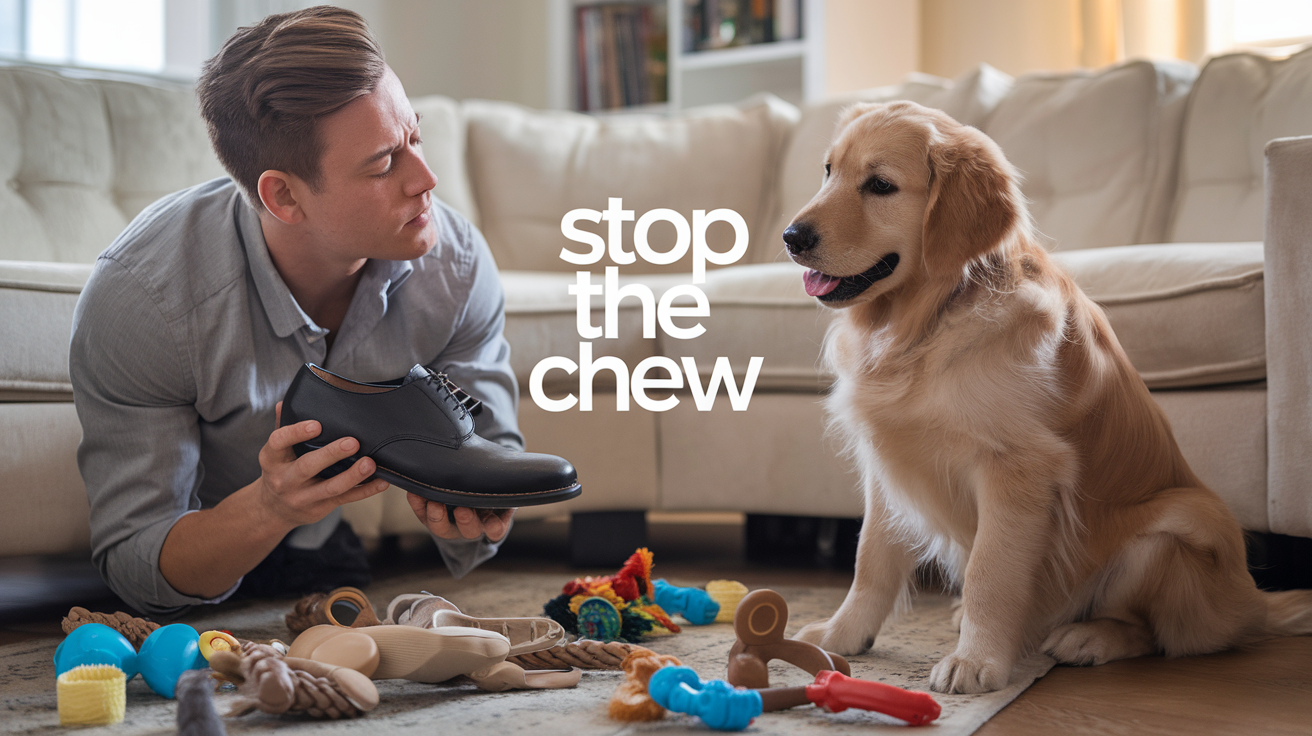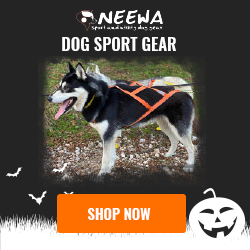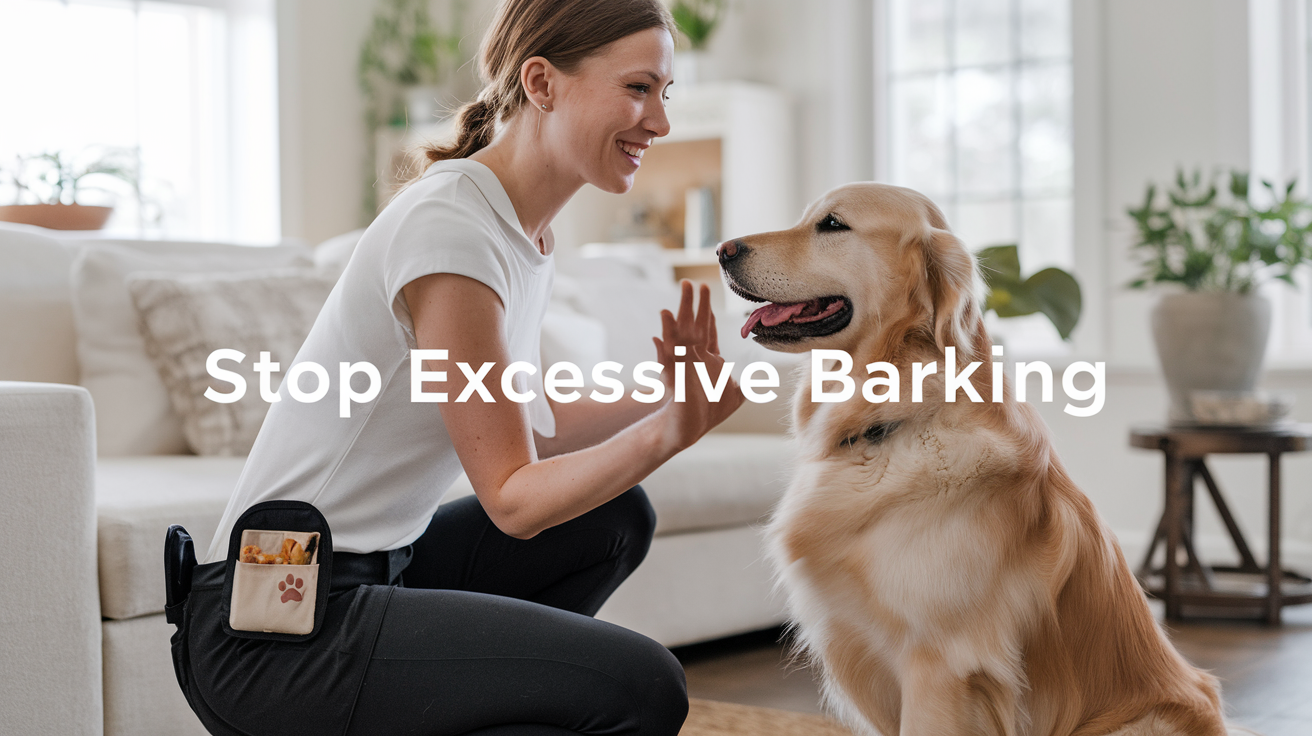
Is your favorite pair of shoes now a chew toy? 🐾 Are your furniture legs looking more like abstract art? If you’re nodding your head in frustration, you’re not alone. Dog chewing is a common problem that can drive even the most patient pet parents to their wit’s end.
But don’t despair! Whether you’re dealing with a teething puppy or an adult dog with destructive habits, there’s hope. In this guide, we’ll explore the root causes of excessive chewing and reveal 5 easy steps to train your furry friend to keep their teeth where they belong. From understanding why dogs chew to learning what to do when you catch them in the act, we’ve got you covered.
Get ready to transform your home from a canine chew fest to a peaceful haven. We’ll delve into the reasons behind your dog’s chewing behavior, discuss at what age puppies typically outgrow this phase, and provide practical strategies to redirect your dog’s chewing instincts. So, grab a treat (for you, not your dog!) and let’s embark on this journey to a chew-free household! 🏠🐶
Why is Your Dog Chewing Everything?
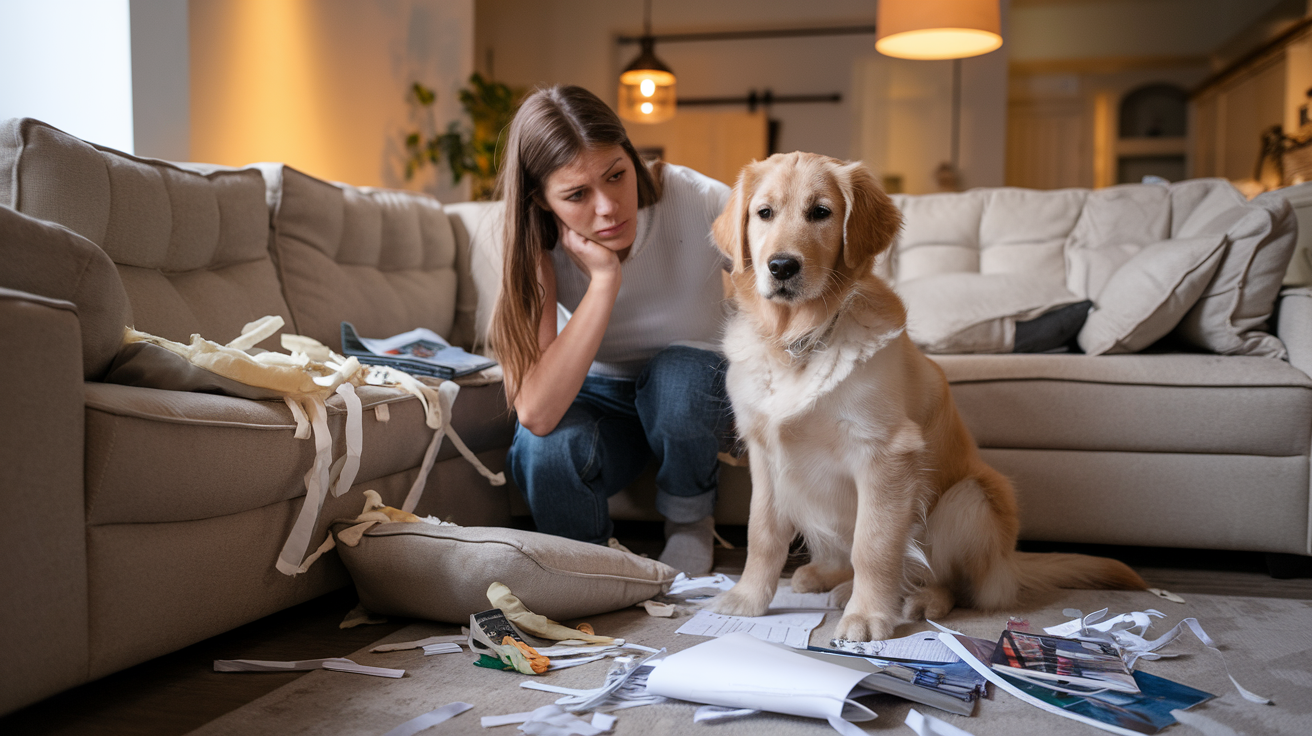
A. Your Dog NEEDS to Chew
Dogs have a natural instinct to chew, which serves several important purposes. Chewing helps maintain dental health by removing plaque and tartar, strengthens jaw muscles, and provides mental stimulation. It’s crucial to understand that chewing is not a behavior to be entirely eliminated, but rather redirected to appropriate objects.
B. Dog Chewing Due to Boredom
When dogs lack physical exercise or mental stimulation, they often turn to destructive chewing as a way to alleviate boredom. This behavior is particularly common in high-energy breeds or dogs left alone for extended periods.
C. Dog Chewing Due to Stress or Anxiety
Anxiety and stress can manifest in excessive chewing behavior. Common triggers include:
- Separation anxiety
- Changes in routine or environment
- Loud noises (e.g., thunderstorms, fireworks)
- New family members or pets
D. Dog Chewing Due to Teething
Puppies go through a teething phase, typically between 3-6 months of age, during which chewing helps alleviate discomfort. This is a normal developmental stage but requires careful management to prevent destructive habits from forming.
| Age Range | Teething Stage |
|---|---|
| 2-3 weeks | Milk teeth emerge |
| 3-6 weeks | All 28 baby teeth in place |
| 12-16 weeks | Adult teeth start coming in |
| 6-7 months | All 42 adult teeth in place |
Understanding these root causes of chewing behavior is crucial for developing an effective training strategy. By addressing the underlying reasons, you can better tailor your approach to stop inappropriate chewing and promote healthy chewing habits. Next, we’ll explore at what age puppies typically outgrow their intense chewing phase.
At What Age Do Puppies Stop Chewing?
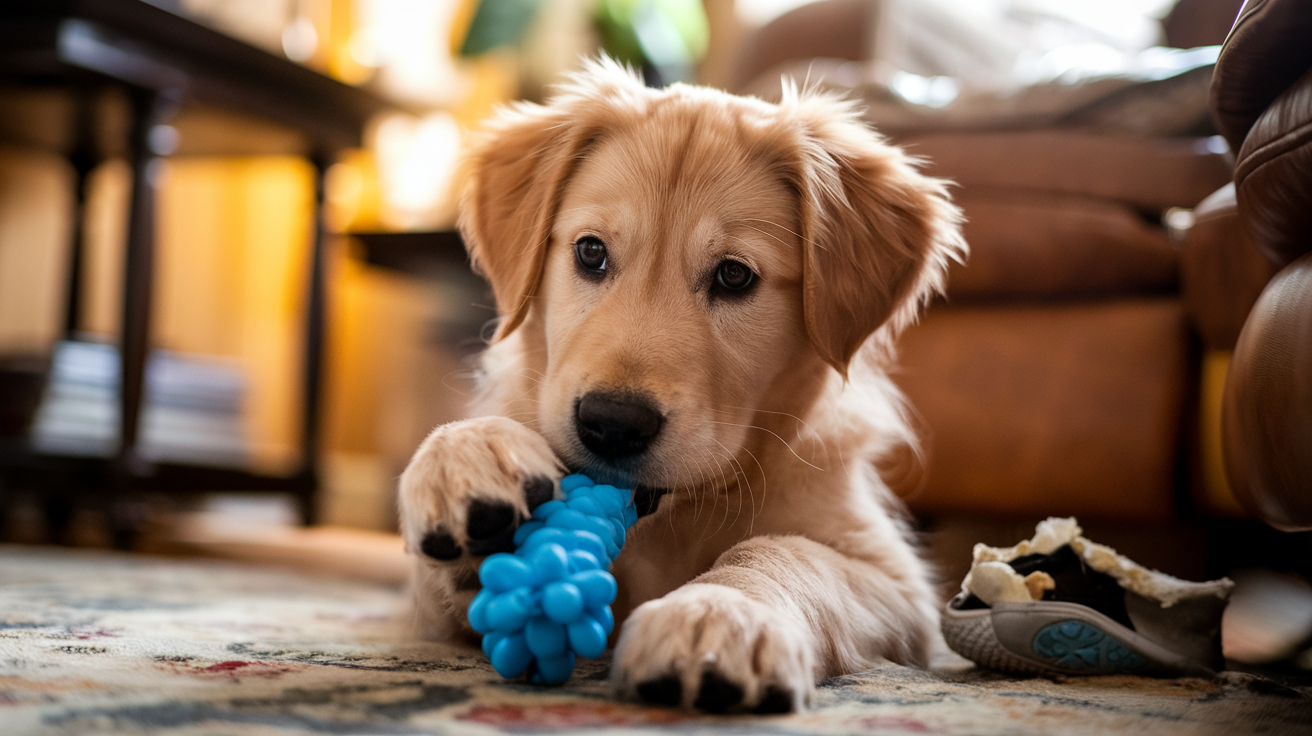
Puppy Chewing Phases
Puppies go through several chewing phases as they grow:
- Teething phase (3-6 months)
- Exploratory phase (6-12 months)
- Adolescent phase (12-18 months)
- Adult phase (18+ months)
Factors Affecting Chewing Behavior
The age at which puppies stop chewing varies depending on several factors:
| Factor | Impact on Chewing Behavior |
|---|---|
| Breed | Larger breeds may take longer to outgrow chewing |
| Training | Consistent training can reduce chewing earlier |
| Environment | Enriched environments may decrease destructive chewing |
| Exercise | Well-exercised dogs are less likely to chew out of boredom |
When to Expect Improvement
Most puppies begin to show significant improvement in their chewing habits around 6-8 months of age. However, it’s important to note that some dogs may continue to chew occasionally throughout their lives. Consistent training and providing appropriate chew toys can help redirect this natural behavior.
Now that we understand the timeline for puppy chewing, let’s explore effective strategies to stop your dog’s inappropriate chewing habits.
How to Stop Your Dog’s Inappropriate Chewing
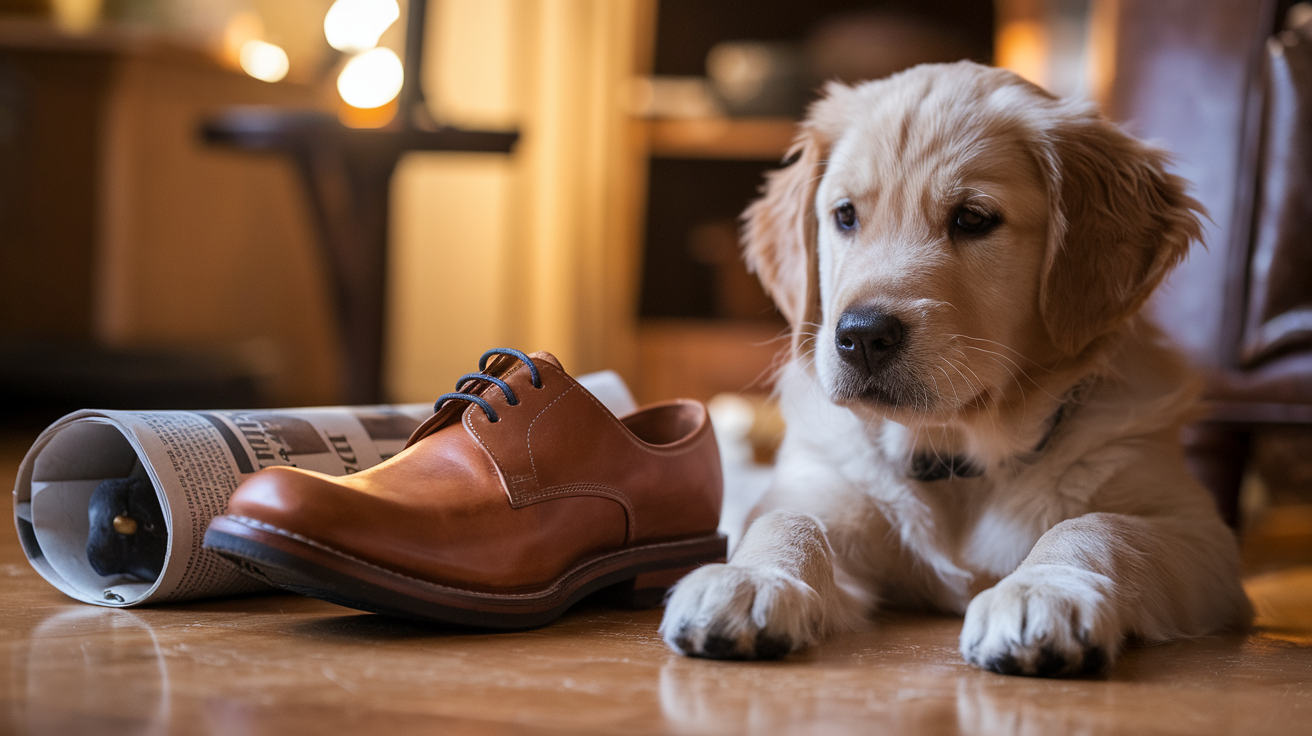
Manage Your Dog’s Environment
To effectively stop your dog’s inappropriate chewing, managing their environment is crucial. Start by dog-proofing your home:
- Remove tempting objects
- Use deterrent sprays on furniture
- Provide safe chewing alternatives
Here’s a comparison of common household items and their potential risks:
| Item | Risk Level | Action |
|---|---|---|
| Shoes | High | Store in closed closet |
| Electrical cords | Very High | Cover or use cord protectors |
| Houseplants | Medium to High | Place out of reach or use barriers |
| Remote controls | Medium | Keep in drawers when not in use |
By managing your dog’s environment, you reduce opportunities for destructive chewing and create a safer space for your furry friend.
Rotate Your Dog’s Toys and Chews
Keeping your dog interested in their toys is key to preventing boredom-induced chewing. Implement a toy rotation system:
- Divide toys into 3-4 groups
- Swap out toys weekly
- Reintroduce “old” toys as exciting “new” ones
This strategy works because:
- It maintains novelty
- Prevents toy fatigue
- Stimulates mental engagement
Remember to include a variety of textures and types of chew toys to cater to your dog’s preferences and chewing needs. With these strategies in place, you’ll be well on your way to redirecting your dog’s chewing behavior to appropriate items. Next, we’ll explore what to do if you catch your dog in the act of inappropriate chewing.
What Should You Do if You Catch Your Dog Chewing on Things?
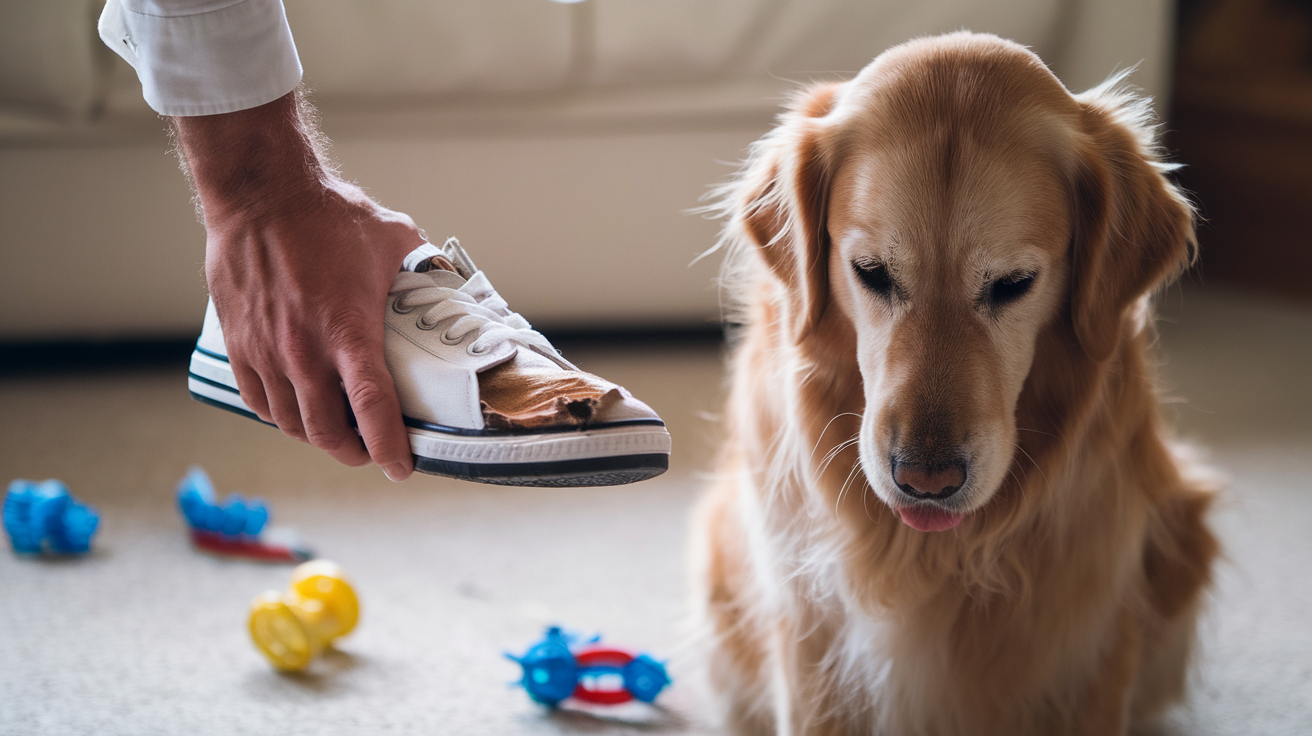
Immediate Action
When you catch your dog in the act of chewing something inappropriate, it’s crucial to act quickly and effectively. Follow these steps:
- Interrupt the behavior with a firm “No” or clap
- Remove the item from your dog’s mouth
- Offer an appropriate chew toy as a replacement
- Praise your dog when they accept the alternative
Redirect and Reinforce
Redirecting your dog’s chewing behavior is key to preventing future incidents. Here’s how to do it:
- Provide a variety of appropriate chew toys
- Rotate toys regularly to maintain interest
- Use positive reinforcement when your dog chews on the right items
| Do’s | Don’ts |
|---|---|
| Offer immediate alternatives | Punish after the fact |
| Use positive reinforcement | Yell or physically punish |
| Supervise your dog | Leave tempting items accessible |
Prevent Future Incidents
To stop your dog from chewing on things in the long term:
- Dog-proof your home by removing tempting items
- Use deterrent sprays on furniture or objects you can’t move
- Increase exercise and mental stimulation
- Consider crate training when you can’t supervise
Remember, consistency is key in dog training. By following these steps and maintaining a positive approach, you can effectively curb your dog’s inappropriate chewing habits and foster good behavior.
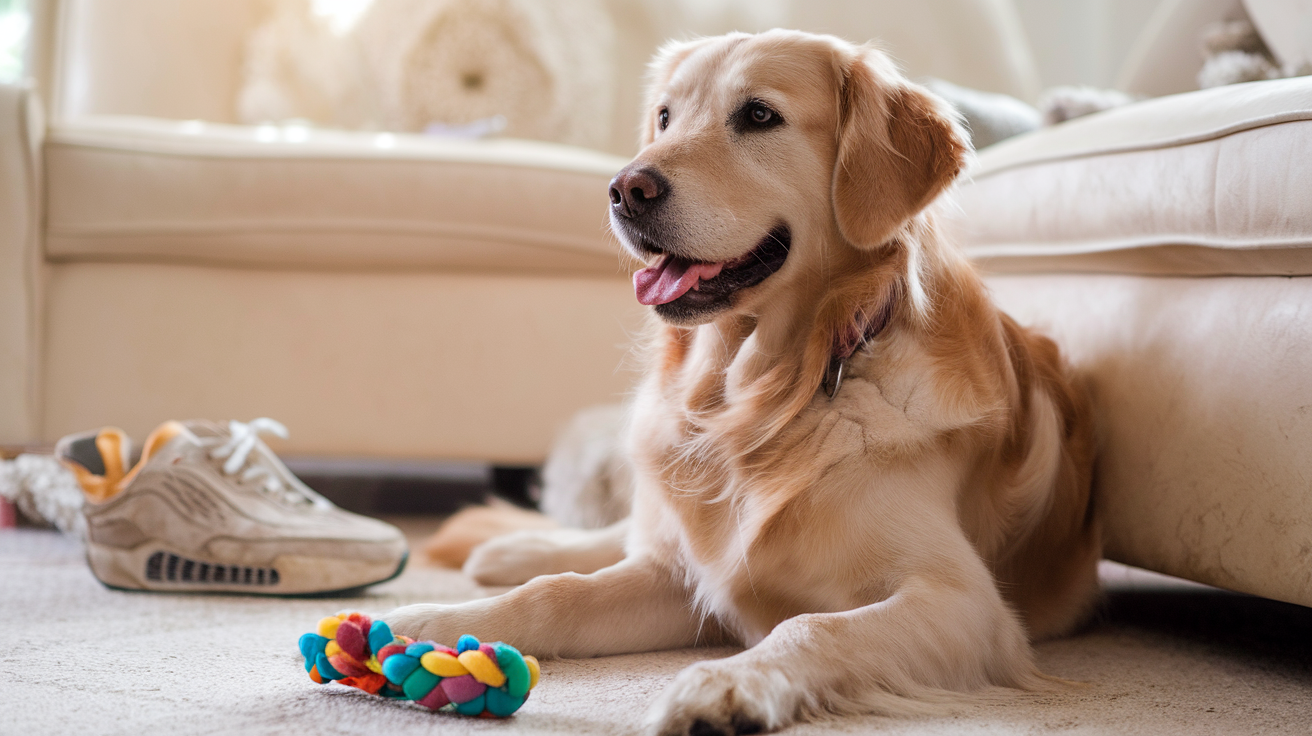
Training your dog to stop chewing requires patience, consistency, and understanding. By addressing the root causes of chewing behavior, providing appropriate alternatives, and implementing positive reinforcement techniques, you can effectively guide your furry friend towards better habits. Remember that puppies naturally explore the world with their mouths, and this behavior typically subsides as they mature.
To successfully curb your dog’s inappropriate chewing, focus on redirecting their attention to suitable chew toys, ensuring they get enough physical and mental stimulation, and creating a safe environment. If you catch your dog in the act, remain calm and redirect them to an appropriate item. With time and dedication, you’ll foster a stronger bond with your pet while teaching them valuable lessons about what they can and cannot chew.
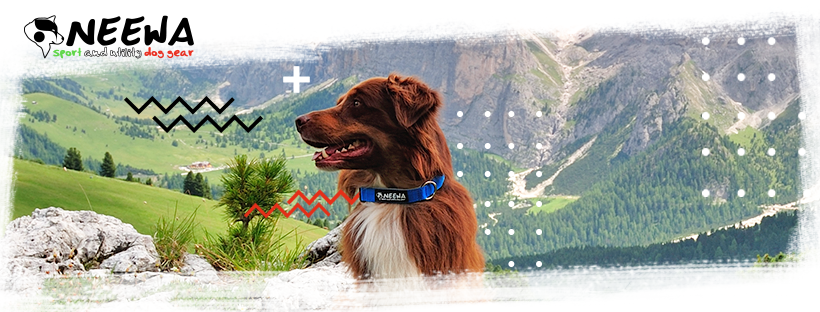
Originally posted 2025-02-24 03:24:18.
0